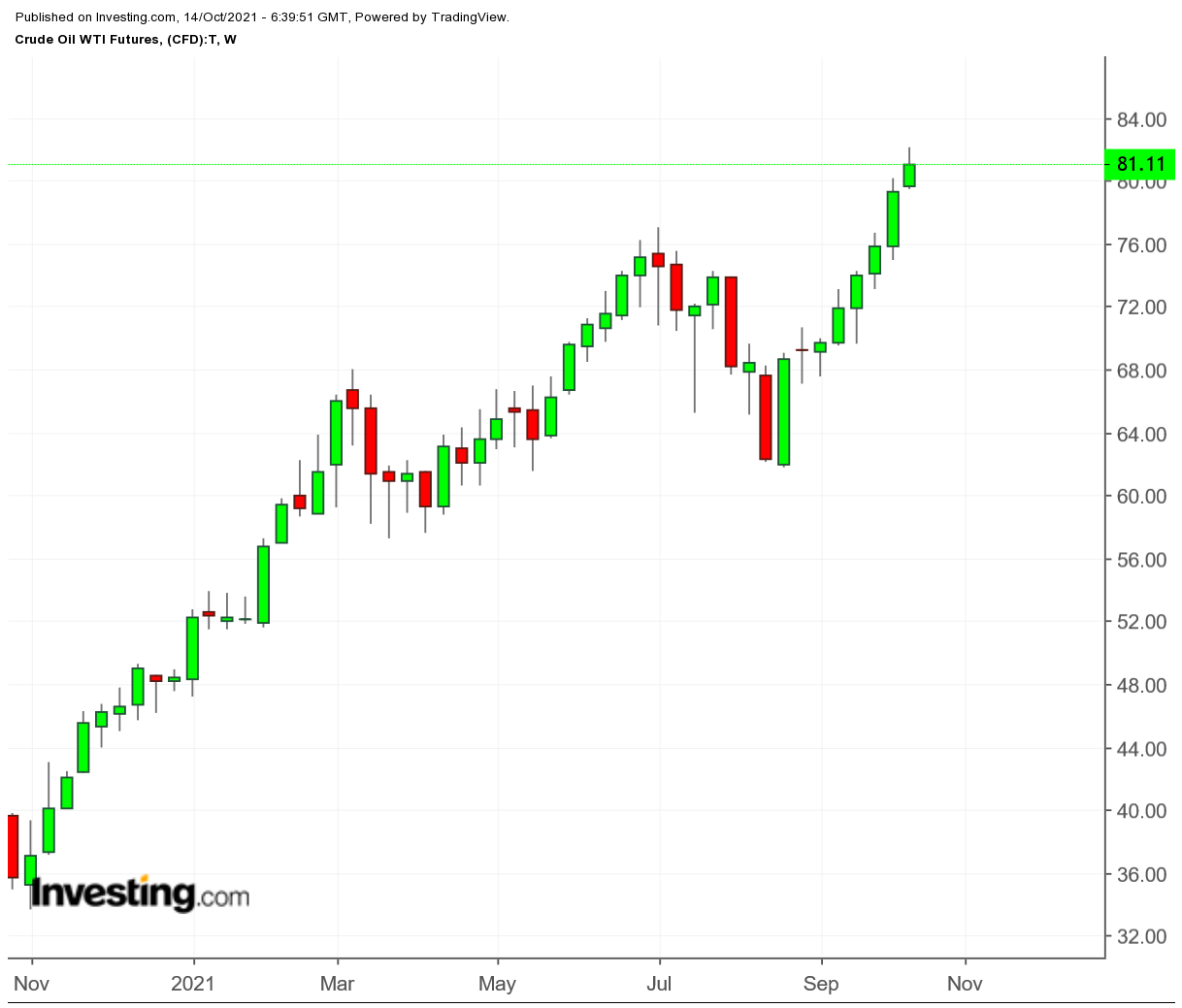Why is WTI and American crude oil suddenly priced so high? Prices were below $63 less than two months ago and this week WTI surpassed $80 per barrel, reaching its highest level since 2014 when the last major price adjustment was in progress.
Let's focus on that quandary and take a closer look at what's really affecting prices. And as we will see, the rise in price is more an issue of sentiment and speculation, than a reflection of supply-demand fundamentals.

Debunking The Supply-Demand Argument
It is true that demand did increase this summer, and stores of crude oil and gasoline did draw down. However, this trend is now reversing. According to GasBuddy data, gasoline demand in September fell 3.35%. The economy is still impacted by the COVID virus, and there are strong forecasts indicating economic hubs in the northern U.S. will face another wave this winter.
Moreover, refinery utilization last week was 89.6%, according to the EIA. The EIA showed a gasoline build too. These data do not indicate a supply shortage currently nor in the near future.
Also, production from the Gulf of Mexico—which had been impaired by Hurricane Ida in August—was finally fully restored a couple weeks ago. It made sense for the Ida outages to push up prices in August and September. Yet, this is not a good argument for rising prices in October.
Shale Firms Are Not Increasing Production
Shale firms have caused market sentiment to push for higher prices in two ways: 1) large shale firms have not returned to pre-COVID production levels like the market initially expected they would, and 2) shale executives have said recently they are not likely to increase production even at much higher prices.
Pre-COVID, U.S. oil production peaked at 13.1 mbpd. The most recent numbers show U.S. production at 11.3 mbpd. The market expected more by now. Moreover, shale firms are strongly indicating that they have no intention of raising production in this business climate, regardless of the heights reached by WTI. Market movers see this as a force to push prices up.
Fear Of A Natural Gas Shortage
Some in the market fear that there is a coming natural gas shortage in the United States. Europe has already seen natural gas shortages, and the White House is now warning that U.S. heating bills this winter could be more than 50% higher. If there is a shortage of natural gas in the United States, many natural gas power generators (that produce electricity) could switch to oil as their fuel. Typically, natural gas can be the source for about 40% of all U.S. electricity generation.
Speculation
Speculation is always a driving force in commodities markets. Institutions and people invest to see monetary returns, and right now the U.S. equities market is not doing well. Investing in the oil market has been much more lucrative over the last two months.
Which stock should you buy in your very next trade?
With valuations skyrocketing in 2024, many investors are uneasy putting more money into stocks. Unsure where to invest next? Get access to our proven portfolios and discover high-potential opportunities.
In 2024 alone, ProPicks AI identified 2 stocks that surged over 150%, 4 additional stocks that leaped over 30%, and 3 more that climbed over 25%. That's an impressive track record.
With portfolios tailored for Dow stocks, S&P stocks, Tech stocks, and Mid Cap stocks, you can explore various wealth-building strategies.

